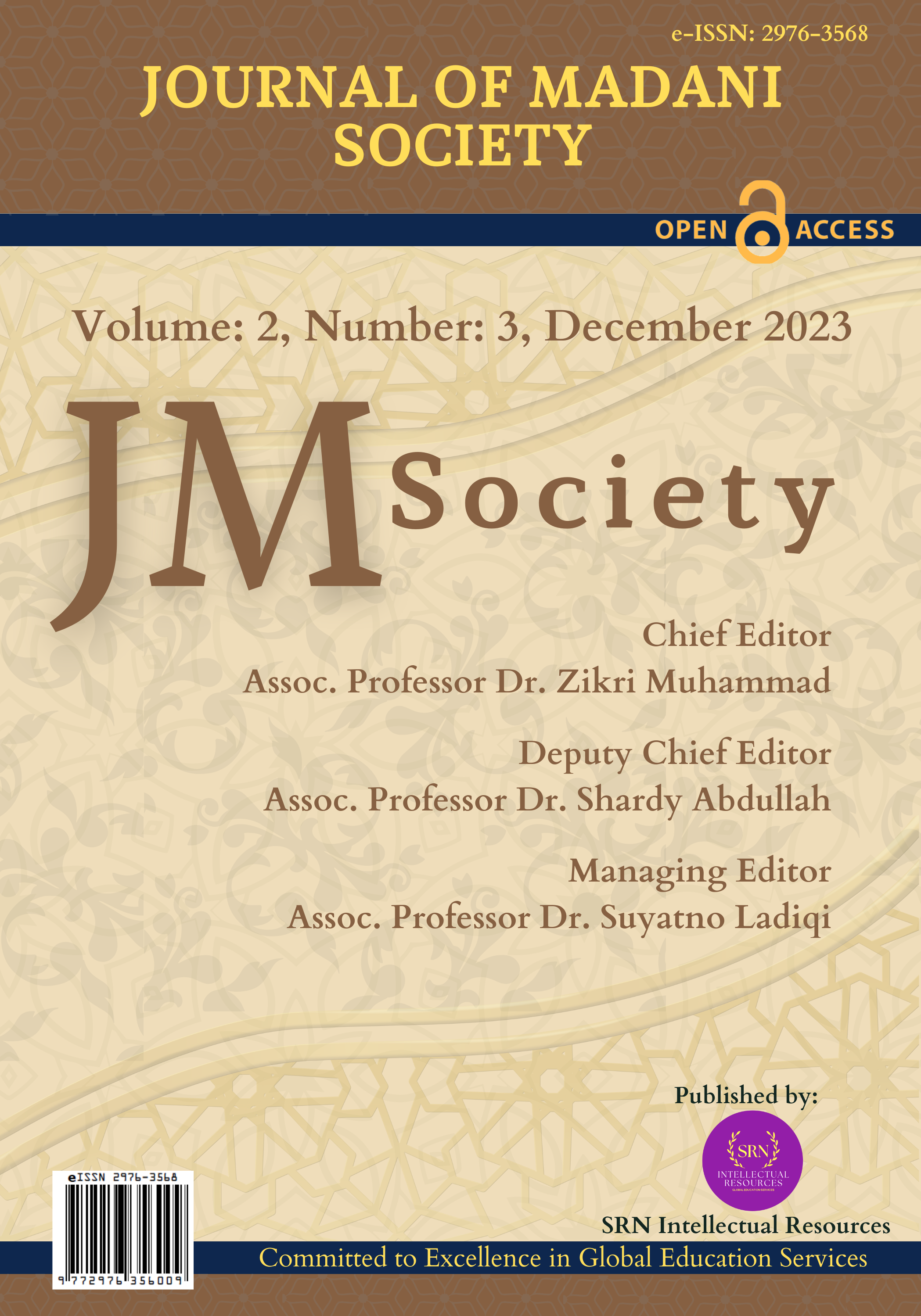How Are Digital Immigrants Adapting to Online Learning?
https://doi.org/10.56225/jmsc.v2i3.234
Keywords:
Literacy, Technology, Digital immigrants, Online LearningAbstract
Changes in the learning method at the Faculty of Social and Political Sciences, the University of Bengkulu, are drastic, and available options are to organize lectures virtually. This article wants to identify how digital immigrants adapt to online learning and the constraints and solutions given in online learning at the University of Bengkulu. The research method uses a mixed method. Quantitative methods are used to answer measurement ability literacy technology in learning. Qualitative methods are used to dig for completeness of information related to constraints and solutions in online learning. Data collection was carried out with questionnaires, interviews, and observations. Research results show that 91.77% of the use of social media applications and learning online is 91.77%. Constraints include limited time in using the application's usual Zoom meetings, difficulties in understanding the features of the application learning online, and how difficult it is to arrange effective use when the number of participants is too many. The solution with increased feature application is for premium Zoom meetings to overcome time and availability limitations. Work the same good and announce between lecturers and students in the study and teach activity process in a manner online.
Downloads
References
Baran, S. (2011). EBOOK: Introduction to Mass Communication: Media Literacy and Culture. McGraw Hill.
Coman, C., Țîru, L. G., Meseșan-Schmitz, L., Stanciu, C., & Bularca, M. C. (2020). Online teaching and learning in higher education during the coronavirus pandemic: Students’ perspective. Sustainability, 12(24), 10367. https://doi.org/10.3390/su122410367
Ezziane, Z. (2007). Information technology literacy: Implications on teaching and learning. Journal of Educational Technology & Society, 10(3), 175–191.
Hastuti, K. P., Angriani, P., Alviawati, E., & Arisanty, D. (2021). The perspective of geography education students on the implementation of online learning during covid-19 pandemic. IOP Conference Series: Earth and Environmental Science, 747(1), 12012.
Hirskyj-Douglas, I., Kantosalo, A., Monroy-Hernández, A., Zimmermann, J., Nebeling, M., & Gonzalez-Franco, M. (2020). Social AR: Reimagining and Interrogating the Role of Augmented Reality in Face to Face Social Interactions. Companion Publication of the 2020 Conference on Computer Supported Cooperative Work and Social Computing, 457–465. https://doi.org/10.1145/3406865.3418585
Kebritchi, M., Lipschuetz, A., & Santiague, L. (2017). Issues and challenges for teaching successful online courses in higher education: A literature review. Journal of Educational Technology Systems, 46(1), 4–29. https://doi.org/10.1177/0047239516661713
Kirilova, G. I., & Windarti, A. (2020). Impact of Corona Virus Outbreak Towards Teaching and Learning Activities in Indonesia. Salam: Jurnal Sosial Dan Budaya Syar’i, 7(3), 269–282.
Latif, O. L. I. A. (2021). The COVID-19 Pandemic and its Impact on English Language Teaching in Higher Education. Journal of Research in Education, 36(3), 59–108.
Mishra, L., Gupta, T., & Shree, A. (2020). Online teaching-learning in higher education during lockdown period of COVID-19 pandemic. International Journal of Educational Research Open, 1, 100012. https://doi.org/10.1016/j.ijedro.2020.100012
Murari, K., & Rai, S. (2022). Students’ Attitude and Intentions Towards Online Learning in Higher Education: Examining the Role of Individual and System Characteristics. The Online Journal of Distance Education and E-Learning, 10(3), 399–416.
Muslim, S., Siang, J. L., & Arum, A. P. (2019). Network based online learning program vocational school in Jakarta state university. International Journal of Recent Technology and Engineering, 8(2), 228–239. https://doi.org/10.35940/ijrte.B1052.0982S919
Prensky, M. (2012). The Reformers Are Leaving Our Schools in the 20th Century. In From Digital Natives to Digital Wisdom: Hopeful Essays for 21st Century Learning (Vol. 24, pp. 13–32). Corwin Press. https://doi.org/10.4135/9781483387765.n2
Rahmah, M., Simanjuntak, M., Sari, A. M., & Johan, I. R. (2023). The Study of Program and Roles of National Consumer Protection Agency using Qualitative and Quantitative Approaches. Journal of Child, Family, and Consumer Studies, 2(3), 209–222. https://doi.org/10.29244/jcfcs.2.3.209-222
Setiawan, A., Bukhari, A., Arbain, M., Saleh, K., Rasyidi, A., Anshari, M., & Hafiz, M. (2021). Strategy of Online-Based Learning in Overcoming Facing the COVID-19 Pandemic. ITALIENISCH, 11(2), 639–647.
Simamora, R. M. (2020). The Challenges of online learning during the COVID-19 pandemic: An essay analysis of performing arts education students. Studies in Learning and Teaching, 1(2), 86–103. https://doi.org/10.46627/silet.v1i2.38
Tayo, Y., Nursanti, S., & Utamidewi, W. (2021). Hambatan Pembelajaran Jarak Jauh bagi Guru Digital Immigrant. Jurnal Kebijakan Pembangunan, 16(2), 155–164. https://doi.org/10.47441/jkp.v16i2.161
Yufrinalis, M., & Tiring, S. S. N. D. (2022). Online Learning Participation after the Covid-19 Pandemic in Sikka Regency, Eastern Indonesia. Education Quarterly Reviews, 5(4), 136–145. https://doi.org/10.31014/aior.1993.05.04.580
Downloads
Published
How to Cite
Issue
Section
License
Copyright (c) 2023 Authors

This work is licensed under a Creative Commons Attribution 4.0 International License.


























